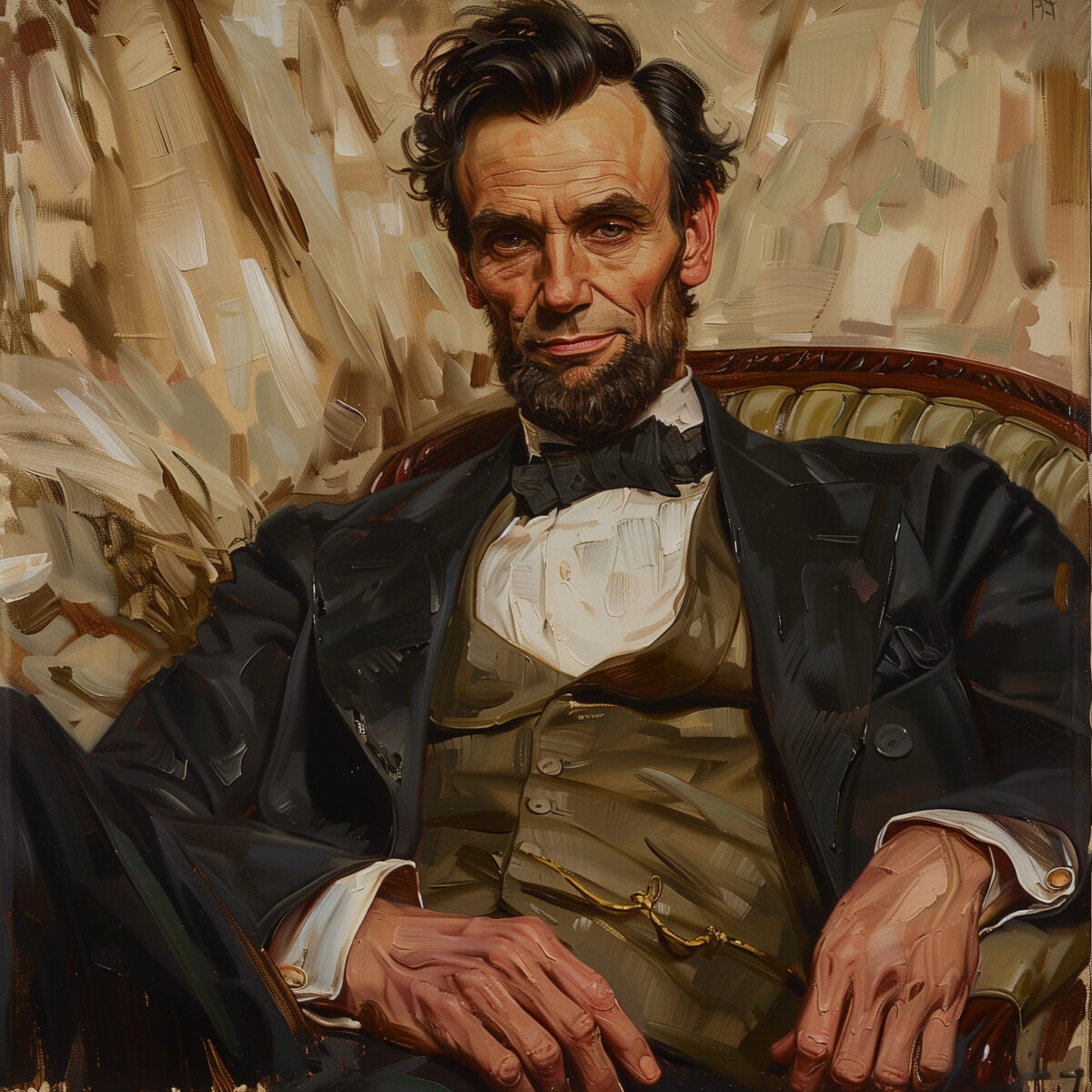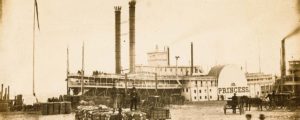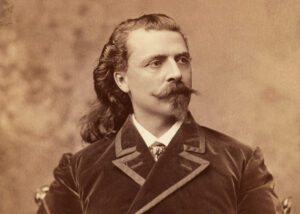The summer heat of Washington, D.C., has tortured politicians and residents of the tidal town ever since it became the seat of the U.S. government. Abraham Lincoln was no more immune to the reclaimed swamp-land’s sweltering atmosphere than the next chief executive. Fortunately for Lincoln, a three-mile horseback ride could take him to a fashionable Gothic Revival—style cottage continually refreshed by soft, constant breezes. The 19-room cottage, with 6,000 square feet of living space on two main levels, enabled Lincoln to relax with his wife Mary and free-spirited son Tad. The president spent about 13 months of his four years in office, about a quarter of his presidency, in the home.
George W. Riggs, a wealthy Washington banker and financier, built the cottage, really a full-size house, in 1842 as a summer home. In 1851 Riggs sold the house and 256 acres to the U.S. government for $58,111.75 for use as a “Soldiers’ Home”—an asylum for disabled soldiers. The government built a large dormitory on the grounds and enlarged the Riggs cottage.
The cottage sits on the third-highest hill in Washington, catching winds that make summer temperatures about 10 degrees cooler than at the White House. President James Buchanan was the first chief executive to take advantage of the site to escape the heat during his 1857-1861 term.
After Lincoln came into office, like many modern workers in the D.C. region, he commuted to his job when he lived at the cottage. The president would travel to the White House each day and return to the home every evening, seven days a week. The trip took the president about 45 minutes on horseback. Frequently, Lincoln returned late at night to his cottage refuge.
Lincoln, of course, was exposing himself to great danger by traveling alone in a town that harbored a good deal of Confederate sympathy. Troopers of the 11th New York Cavalry were assigned to accompany the president on his daily journeys to and from the Executive Mansion. The president disliked all the security and would often rise and leave early in the morning, forcing the harried troopers to hurry to catch up with their boss.
On occasion Lincoln would go ahead and make the trip unescorted, an indulgence for privacy’s sake that nearly proved fatal on one occasion. One night in 1864, Private John W. Nichols of Company K of the 150th Pennsylvania was on guard duty when he heard a rifle shot and saw Lincoln gallop through the gate without his top hat. Lincoln told Nichols that someone had fired a gun, spooking his horse.
Nichols went down to the gate and found the president’s hat, a bullet hole through the crown. Nichols returned the hat to Lincoln, who asked the soldier to keep the incident quiet to avoid upsetting his family. The source of the gunshot was never discovered.
Regardless of such dangers, Lincoln continued his daily rides. He seemed to particularly enjoy the casual interaction it afforded him with his constituents when he was away from the cloistered atmosphere of the White House.
Poet Walt Whitman often saw the president ride by his house, and wrote that he could “see very plainly Abraham Lincoln’s dark brown face, with the deep-cut lines, the eyes, always to me with a deep latent sadness in the expression.”
In 1862 a Federal act was passed that referred to slaves as “contrabands” or “contraband of war,” meaning that they could remain within Union lines and not be returned to their owners. A contraband camp had been established just below the hill of the Soldiers’ Home, one of many around the city. Lincoln would stop at the camp to listen as the former slaves sang spirituals, reportedly often leaving with tears in his eyes. He met Mary Hines at the camp, an escaped slave from Maryland who ended up in the employ of the Lincoln family as a cook.
The location of the Lincoln cottage gave the president plenty of opportunity to talk with soldiers. Roughly 100 yards from the home, about 150 to 200 disabled troops lived in the main dormitory of the Soldiers’ Home. They were mostly German and Irish-American soldiers who did not have any family to go back to, like many other wounded men. It was a pretty rough, hard-drinking group.
At the recommendation of Secretary of War Edwin P. Stanton, General James Wadsworth, the District of Columbia’s military governor, assigned soldiers to guard the president and first family. Various units filled that role, including companies of the 150th Pennsylvania, one of the famous Bucktail regiments. Companies D and K originally pulled the cushy detail, but Company D was later sent to guard another facility in the area.
The soldiers in Company K bonded with the first family. In fact, Company K’s captain, David V. Derickson, became a close friend of the president, and they frequently breakfasted together. Often Tad would go to mess with the Company K men, who made the 8-year-old an honorary “3rd lieutenant.” Tad brought along a menagerie of animals from the White House to the cottage, including a pet goat named Nanny. One day Nanny wandered up the stairs to the boy’s bedroom after Tad and his mother had left the house for a trip. “The day you left Nanny was found resting herself, and chewing her little cud, on the middle of Tad’s bed,” Lincoln wrote in a September 1863 letter intended for Mary but never delivered.
Their friendships with the soldiers apparently helped the Lincolns to get over the loss of their 11-year-old son, Willie, who had died of typhoid fever in the White House in February 1862. When they first stayed at the cottage the following June, they were still in deep grief. Mary wrote to her friend Mrs. Charles Eames in July 1862 that “In the loss of our idolized boy, we naturally have suffered such intense grief that a removal from the scene of our misery was found very necessary.”
The specter of death, however, was never far from the Lincolns when they were at the cottage. In 1861 the Federal government had begun using the grounds adjacent to the Soldiers’ Home as a national cemetery. By the time the Lincolns were living in the cottage, burials were ongoing at the rate of about 30 a day. By 1864, some 5,000 soldiers had been buried there, and Lincoln was reminded of the the war’s tragic costs each time he passed by. The burial ground continued to be used long after the Civil War.
The war itself came very near to the cottage’s doorstop in July 1864, when Confederate General Jubal Early led an attack on Fort Stevens, about two miles north of the Soldiers’Home. Lincoln rode out to witness the battle, and Mary went with him. Enemy bullets buzzed past him, and one struck the leg of an Army surgeon standing near him.
Someone shouted at Lincoln to get down—a shout that variously has been attributed to Captain Oliver Wendell Holmes, the future chief justice of the Supreme Court; Maj. Gen. Horatio Wright, commander of the newly arrived VI Corps; or Mrs. Elizabeth Thomas, a free black farmer whose house had been destroyed to make room for part of the fort. Regardless of who warned him, Lincoln did get down, taking a seat behind the parapet. Union guns shelled the Confederates, and Wright’s corps drove them back. Early withdrew the next day.
That incident, however, was a rare intrusion of chaos on the quiet setting that gave Lincoln a refuge from the heat and hubbub of wartime Washington. While the burdens of office and a nation at war never left him, the Soldiers’ Home enabled him to get some respite and perspective, as well as the opportunity to mingle with soldiers, politicians and citizens away from the limelight of the White House.
First-time contributor Nicholas Wineriter writes from Gaithersburg, Md., not far north of Abe Lincoln’s summer cottage.
Originally published in the November 2007 issue of America’s Civil War.





